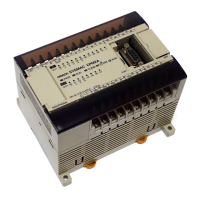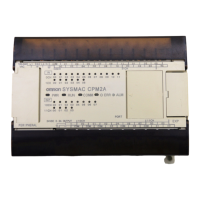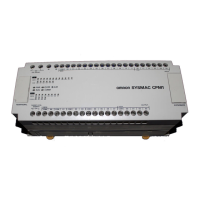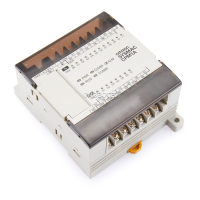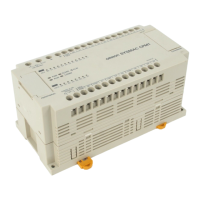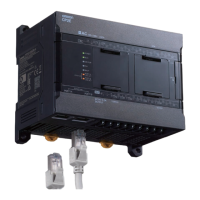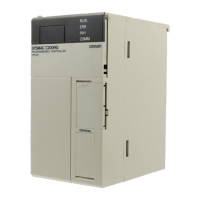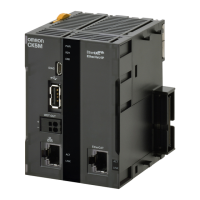172
Programming Console Operations Section 4-2
If errors are displayed, edit the program to correct the errors and check the
program again. Continue checking the program by pressing the SRCH Key
again until all errors have been corrected.
4-2-14 Bit, Digit, Word Monitor
This operation is used to monitor the status of up to 16 bits and words,
although only 3 can be shown on the display at any one time. Operation is
possible in any mode.
Program Read then
Monitor
When a program address is being displayed, the status of the bit or word in
that address can be monitored by pressing the MONTR Key.
1,2,3... 1. Press the CLR Key to bring up the initial display.
2. Input the desired program address and press the Down Arrow Key.
3. Press the MONTR Key to begin monitoring.
If the status of a bit is being monitored, that bit’s status can be changed
using the Force Set/Reset operation. Refer to
4-2-26 Force Set, Reset for
details.
If the status of a word is being monitored, that word’s value can be changed
using the Hexadecimal/BCD Data Modification operation. Refer to
4-2-22
Hexadecimal, BCD Data Modification
, 4-2-23 Binary Data Modification, 4-
2-24 Signed Decimal Data Modification
, and 4-2-25 Unsigned Decimal
Data Modification
for details.
4. Press the CLR Key to end monitoring.
Bit Monitor Follow the procedure below to monitor the status of a particular bit.
1,2,3... 1. Press the CLR Key to bring up the initial display.
2. Input the bit address of the desired bit and press the MONTR Key.
The Up or Down Arrow Key can be pressed to display the status of the pre-
vious or next bit.
The displayed bit’s status can be changed using the Force Set/Reset op-
eration in MONITOR or PROGRAM mode. Refer to
4-2-26 Force Set, Re-
set
for details.
3. Press the CLR Key to end monitoring.
SRCH
00310PROG CHK
END (001)00.3KW
No more errors exist if the END
instruction is displayed.
RUN MONITOR PROGRAM
OK OK OK
C
2
A
0
A
0
E
00200READ
TIM 000
MONTR
6
!"
CLR
00200
TIM 000
SHIFT
CONT
#
B
1
MONTR
00001
^ON
CLR
00000
CONT 00001
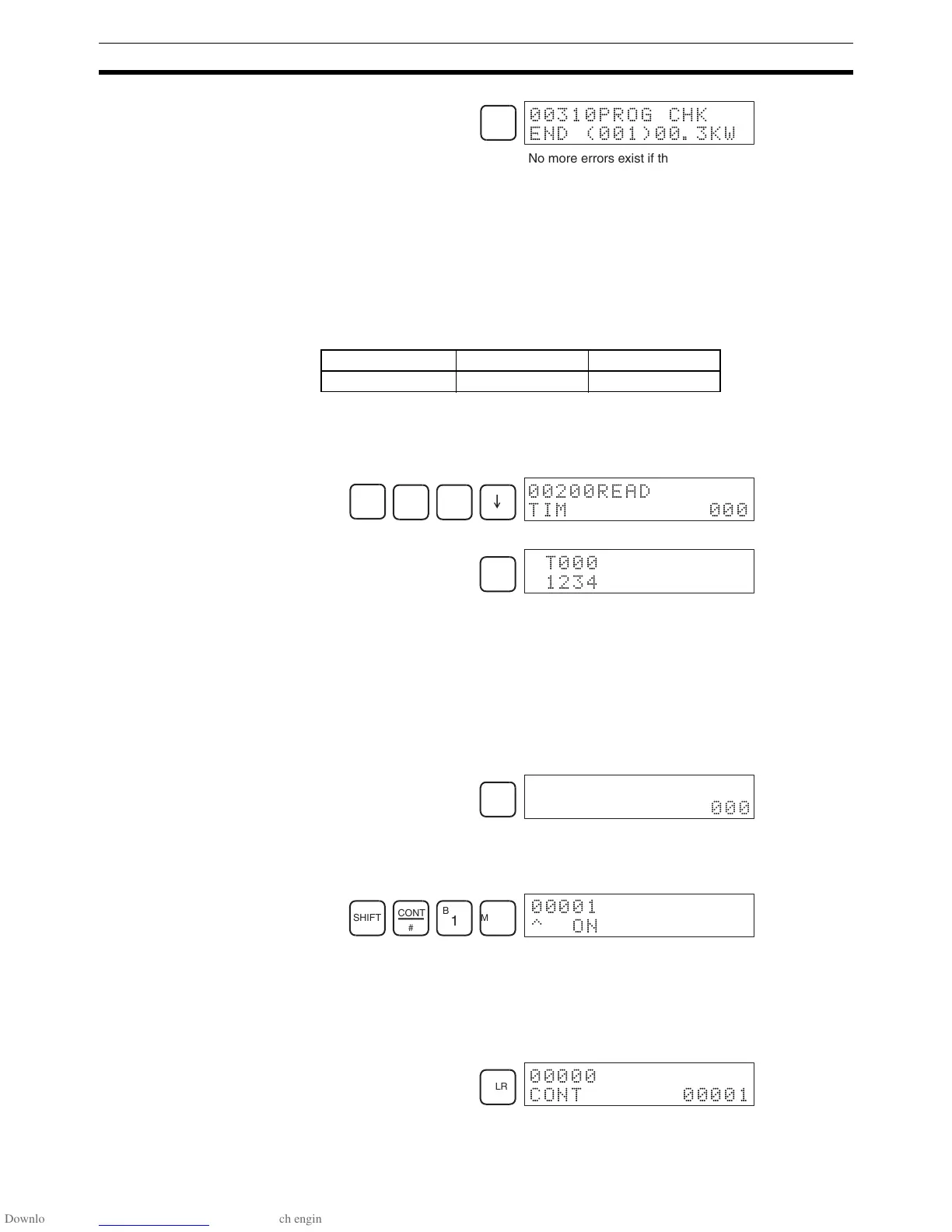